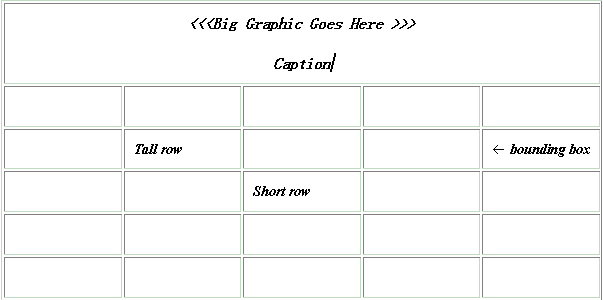表格的标题。可以改变字体、大小和风格(斜体、粗体、小写还是常规)。
o The caption location (above, below, or beside the table) and orientation (letters are horizontal or vertical).
标题的位置(表格的上边、下边还是两侧)和方向(文字水平或垂直排列)。
o A caption graphic (above, below, beside the caption), and graphic size (large, medium, small). It can be a bitmap (PCX, BMP, TIFF) or a vector graphic (CGM, WMF).
标题图形的位置(标题的上边、下边还是两侧),图形大小(大号、中号、小号)。是位图格式(PCX, BMP, TIFF)还是向量格式(CGM, WMF)。
o The thickness of the lines of the table’s bounding box.
表格边框线条的粗度
o The number and sizes of the table’s rows and columns.
表格行、列的数量和大小
o The typeface, size, and style of text in each cell. The size, placement, and rotation of graphics in each cell.
每个单元格中字符的字号、大小和风格。每个单元格中图形的大小、位置和旋转角度。
o The paper size and orientation of the printout of the table.
打印表格的纸张型号和输出方向

Figure 1 Some characteristics of a table
图1 一张表格的特征
These parameters are related because they operate on the same page at the same time. If the rows are too big, there’s no room for the graphic. If there are too many typefaces, the program might run out of memory. This example cries out for testing the variables in combination, but there are millions of combinations.
文章来源于领测软件测试网 https://www.ltesting.net/










